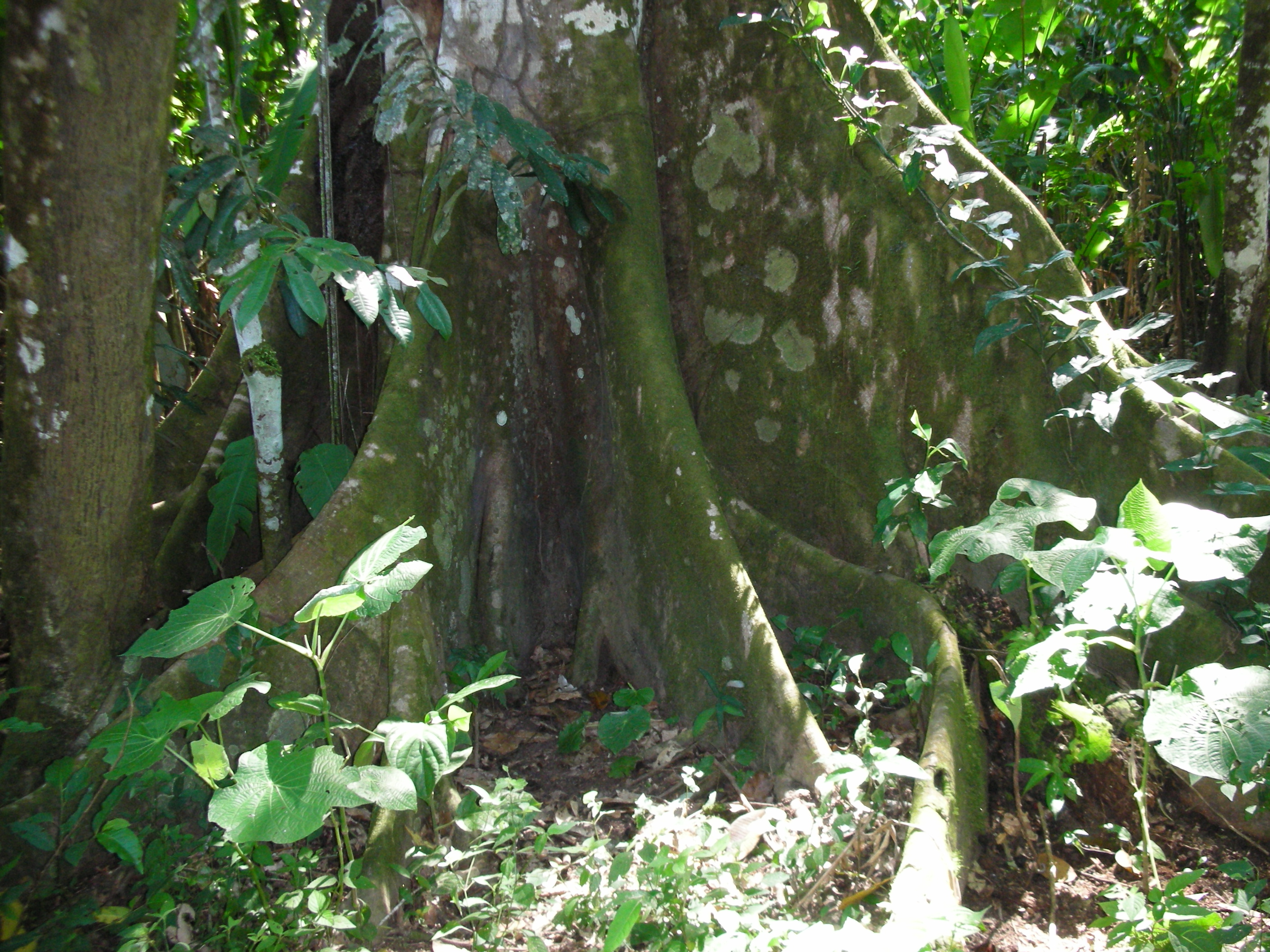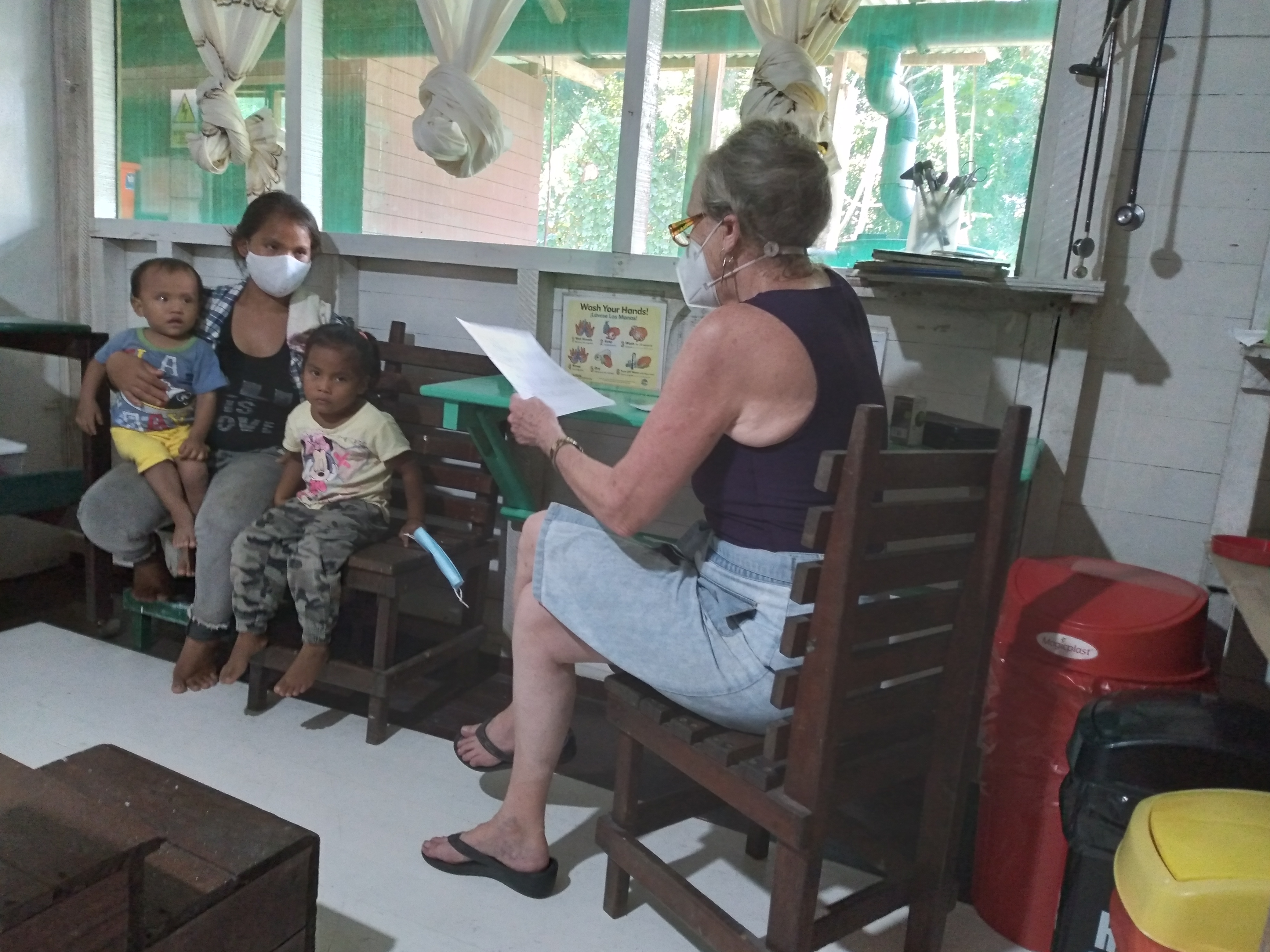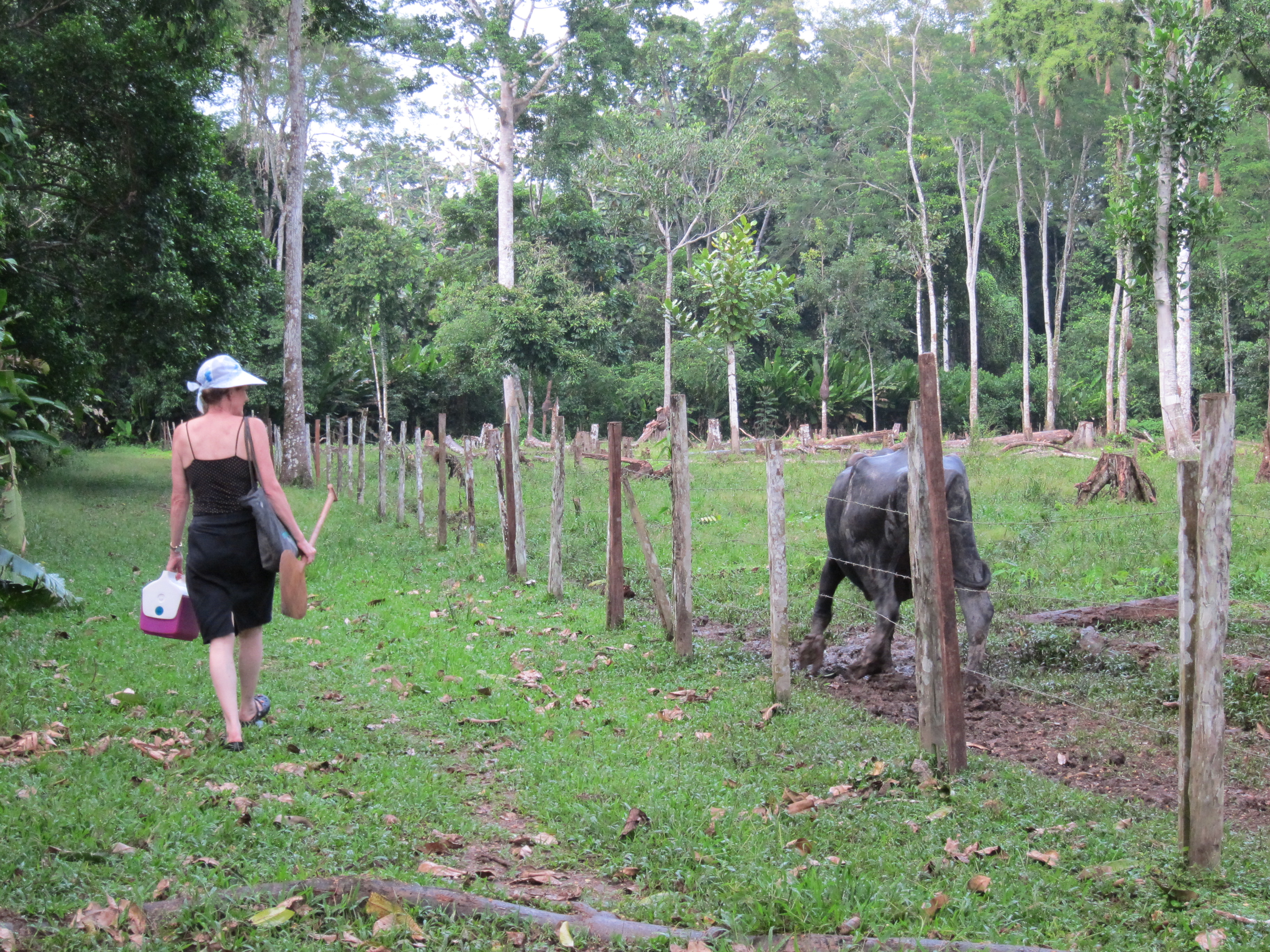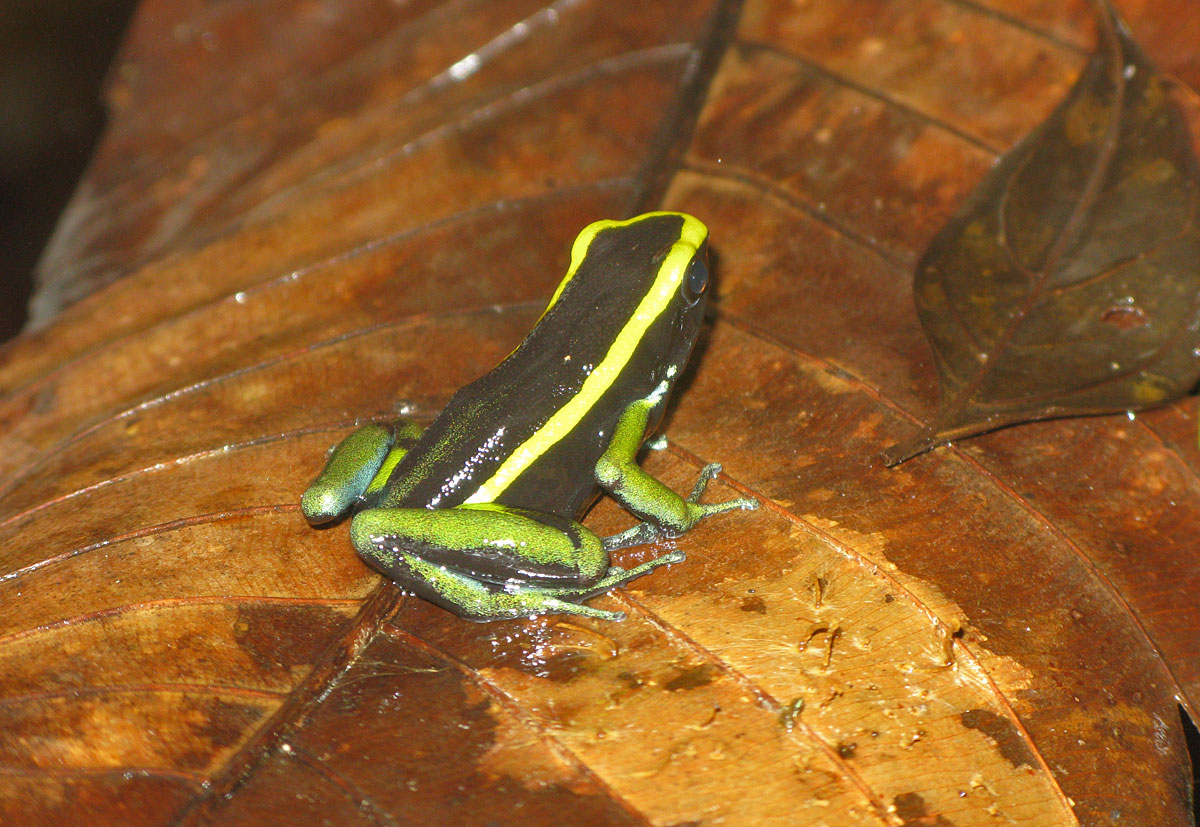Biography
|
For those of you who have asked, are asking, or will some day want to ask -- what am I doing here, anyway? -- here’s an approximate idea.
I am a Wisconsin girl born and bred, with a few years’ time out in Kentucky and Tennessee. I went to medical school at the University of Wisconsin - Madison, graduating in 1984. I completed additional training in Internal Medicine, also in Madison, and am board-certified in that specialty. Then I went into a small group practice a few miles up the road in Prairie du Sac.
In February, 1990, I came to Peru for the first time, for what was intended to be a vacation. There was to be one week at Explorama Lodge in the rainforest, then a second week to visit Cuzco and Machu Picchu.
|
 |
At the end of the first week, however, I didn’t want to leave the rainforest. Even after seeing Machu Picchu and getting back home to Wisconsin, I still didn’t want to leave the rainforest. So, after some faxing and phoning and letter-writing and much patient assistance from Pam in the Explorama office, I came back to Peru, to the Explorama Yanamono Lodge, in June, 1990, armed with my stethoscope, my oto-ophthalmoscope, a small microscope, a bottle of pre-natal vitamins, a few doses of antibiotics, and a three-month leave of absence from my Wisconsin practice. I spoke no Spanish, and I knew there was no running water, electricity, nursing help, pharmacy, x-ray, respiratory therapy, medflight, etc., or etc. Explorama was kind enough to give me a discount rate on my lodging and to throw in the use of a room in one of their thatch-roofed houses for me to use as clinic space.
At the end of those first few months, it was even harder to return to my former life in Wisconsin (which incidentally I had always loved; if I was seeking an escape, I had certainly not been aware of it). I therefore asked my partners for a full year’s leave of absence, and after that, simply stayed on. Explorama has arranged for my local transportation and my international communications, and been my family in Peru, ever since. I take care of their tourists when the need arises, but my main reason for being here is to help the local people, who have little other recourse for medical care. This is a goal of which Explorama has been consistently supportive.
 |
For anyone unfamiliar with the area, the Lodge is 80 kilometers (50 miles) downriver from the city of Iquitos. There are no roads leading to or from Iquitos, so all travel is by boat. The trip to Explorama Lodge takes an hour and a half nowadays in the speedy aluminum boats that Explorama uses, but when I first arrived, we traveled in more picturesque but slower thatch-roofed wooden boats that made the downriver journey in two and a half hours, but took four hours to return upstream to the city. That’s still better than what is available to the local people, which are “river taxis,” boats which chug along slowly (at least as long as they don’t break down or run out of gas, both fairly common occurrences) and stop for anyone who wants to get on or off, and take from six to eight hours to reach Iquitos.
|
Or one can paddle one’s dugout canoe, the local equivalent of the family car, for sixteen to eighteen hours. Needless to say, there is no ambulance service in the rainforest (and definitely no helicopter evacuations). The nearest other doctor in this area is in a Peruvian government-run clinic, halfway between here and Iquitos. When I first arrived, that small medical center had neither doctor nor nurse, and even now they do not always have the medicines the doctor wants to prescribe. For fancy stuff like x-rays or most lab studies, one must go to Iquitos.
Seeing as the competition was minimal, my practice grew. By the time I was back in Wisconsin for a visit in late 1991, I was seeing about 100 patients a month, almost all of them poor, acutely ill, and with no other available source of medical care. On that visit home, I was interviewed by Jean Feraca on her Wisconsin Public Radio program. Following the broadcast, a man called the radio station and identified himself as Jon Helstrom, an architect and a member of Rotary Club, from Duluth, Minnesota. He was intrigued by what I was doing. Now that I know him better, I realize that he was itching to organize a project, and I had the incredibly good fortune of becoming the lucky beneficiary. After Jon made a preliminary visit to my rudimentary “clinic,” he returned to Minnesota and convinced his Rotary District to send a crew down to Peru to build a 30 by 60-foot clinic, complete with well and solar panels, on the bank of the river, about 15 minutes’ walk from the Lodge. While they were at it, they also built me a two-room thatch-roof house on the Lodge grounds so that I finally had my own place to stay.
The Rotary Club members who came here to build the new clinic were so taken with the people and the place that they returned several more times to amplify and improve the facility. However, by mid-2008, it was clear that the Amazon River was eating the land on which the clinic sat, at a pace that threatened to drop the clinic into the river within a very few years. Jon Helstrom was therefore consulted, and again came up not only with a floor plan for a new clinic (situated on Yanamono Stream rather than on the erosion-prone main river), but also the funding and people with which to build it.
|
The new clinic, which opened in March, 2009, has the exam rooms, laboratory, office space, pharmacy, dental room, and patient overnight room of the original clinic; but it also boasts a comfortable living space for the doctor and nurses from Iquitos, a kitchen, and better quarters for the local clinic staff who often spend their nights there, as well as far more storage space than in the original clinic, and a much improved and expanded office (to accommodate the large number of patient files that have accumulated over all these years, and the documentation to go with them).
Way back in 1992, I began training Juvencio Nuñez Pano, a local man then 22 years old, with a wife, three children, and a sixth-grade education. He proved to be an incredibly bright student, and quickly became my right-hand man, capable of examining a patient, recognizing all the diseases we commonly see, and prescribing and administering treatment. He continues to work as nurse, lab technician, dentist, and all-around engineer and fix-it man.
|
 Photo credit: Amber Wobbekind Photo credit: Amber Wobbekind |
The clinic staff also includes his sister Edemita, who began working in May, 1995, doing laundry and secretarial chores, and soon made herself indispensable. I trained her in medical procedures, but like Juvencio, she also subsequently earned a college-level nursing degree from the Universidad Nacional de la Amazonia Peruana in Iquitos. She greets and triages our patients, looks up their histories, takes their vital signs, performs her own exam (and can in my absence treat many of the commoner ailments), and practically grabbed the family planning program from my hands ... a grandmother since she was 31, she understands the need. And when I am in Wisconsin, she manages the clinic’s purchasing and administrative chores.
As the clinic has grown, we have added first one, and then a second additional Peruvian nurse. Our current two are brothers who grew up far out on the Napo River; both are extremely accomplished, unflaggingly enthusiastic, and a great help in the clinic. And as of mid-2022, we also now have a laboratory technician.
Then, there are three watchmen-handymen-gardeners, who keep the clinic from falling apart in the humid tropical climate and call me when an emergency comes in at night. In addition, we have had a few graduates of the nursing school in Indiana (the one between here and Iquitos, not the one between Ohio and Illinois) doing the practical work required in their programs, and occasional volunteer physicians from abroad. And now that I am spending more time in the U.S., we have a rotating cast of Peruvian physicians. No one trained in the city wants to stay long in the rainforest, but we do try to keep a physician on hand, especially when I am not personally at the clinic.
We normally see 200 to 250 patients a month (though this has been significantly impacted by the coronavirus pandemic), for everything from family planning (a program offered by the Peruvian government, in which we enthusiastically participate), to treatment of intestinal parasites and various infectious diseases, to vaccines, to occasional trauma, such as the boy whom a medium-large caiman once attempted to have for dinner. We receive support from the Peruvian government in the form of medicines (family planning supplies, malaria medicines, vaccines, and anti-venin for poisonous snakes and scorpions). We do not receive any funding from the government, but the Ministry of Health officials in Iquitos have generally worked to cooperate with us, since they cannot persuade Peruvian physicians to go to, and stay in, rural areas where there are no support facilities, no medicines, no physician back-up or time off, no place for their wives to shop, no television, and no money to be made.
| The support that enables the clinic to continue functioning has come from a broad range of contributors. Explorama, as mentioned, not only lets me live on their property, ride in their boats, and use their postal box and now even e-mail, but also provides the social support that keeps me in some kind of touch with my former world. Explorama’s tourists have been another huge source of support ... the main source, actually. Their many contributions are the primary source of funding for the clinic, and sometimes they also donate medicines, or provide courier service for supplies which have been donated in the U.S. The Rotarians of several cities, plus the Rotary International Foundation, raised over $35,000 for the materials for the original clinic, and nearly twice that much to construct the 2009 version, in addition to donating many, many hours of their labor. Multiple other Rotary Clubs have made donations, as have many individual Rotarians. The Jack DeLoss Taylor Foundation has been a very generous source of support for many years, and Optimist Clubs, Lions Clubs, and various church and school groups also have provided support. Finally, on grounds that I don’t want to foster dependence, the patients themselves are asked for a small contribution to their own care. (Their payments average roughly $2.00 per person, a fraction of what it costs to treat them and maintain the clinic; and please note, treatment is never denied to those who can’t pay.) |
 Photo credit: Jon Helstrom Photo credit: Jon Helstrom |
Next Page
|
|
|